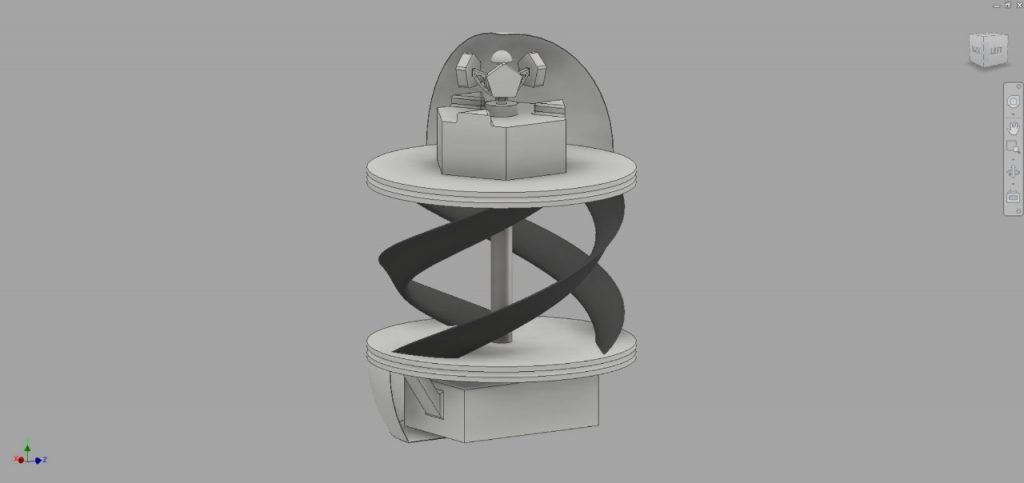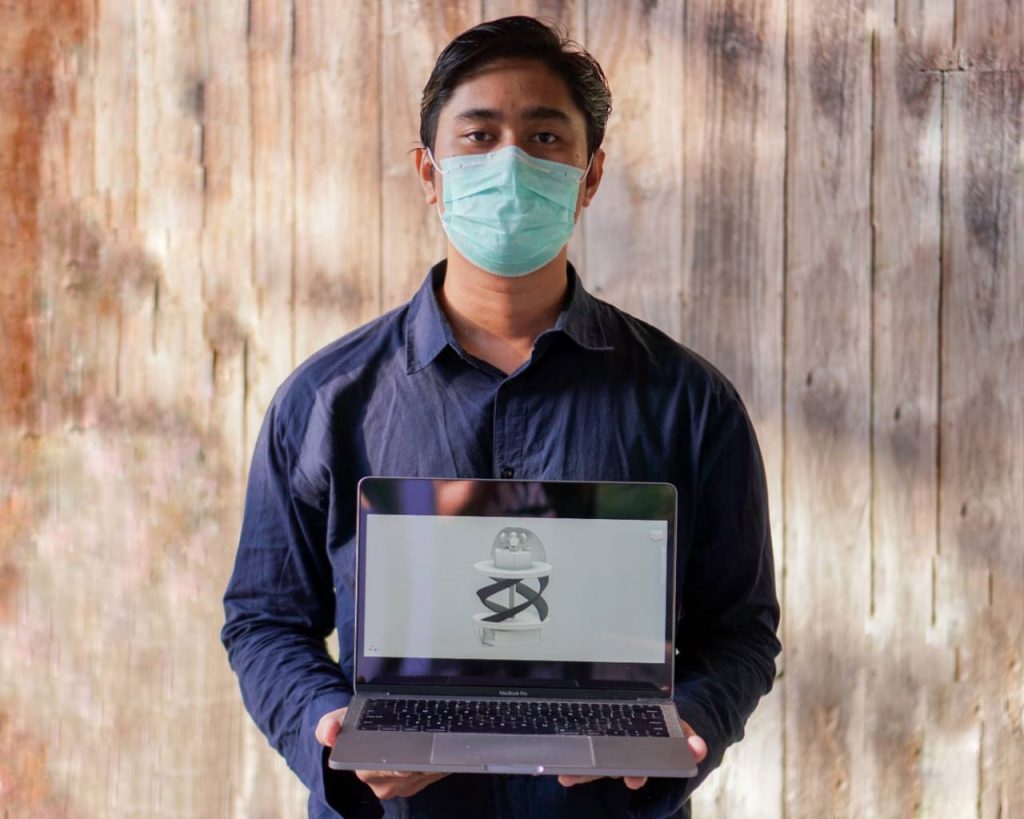ITS Students Innovate Illegal Fishing Detection Sensors and Marine Disasters

Image of HUST prototype that won two awards in international competition
ITS Campus, ITS News – Initiating a new innovation becomes one of the roles of students in solving problems in society. This time, the innovation came from five students of ITS who made the idea of underwater sensor technology innovation applied to Indonesian marine territory.
They are Wildan Muhammad Mursyid (Material Engineering 2017), Ghifari Hanif Mustofa (Mechanical Engineering 2017), Ahmad Fahmi Prakoso (Material Engineering 2018), Edo Danilyan (Biology 2018), and Aldiansyah Wahfiudin (Material Engineering 2018). Working together as a team, they initiated an innovation called Humanless Underwater Sensors Technology (HUST).
Wildan Muhammad Mursyid, the team leader said that HUST is an underwater sensor technology innovation applied in Indonesian marine territory. This tool serves to detect the entry of ships without official permission into Indonesian waters or vessels suspected of illegal fishing. “In addition, HUST can also be used to detect marine disasters such as earthquakes and tsunamis,” he said.
Wildan explained that the idea came about for several reasons. One of them is the number of illegal fishing cases that occur in Indonesian waters. This resulted in Indonesia’s economic losses. If this continues to be allowed then it can cause fish biomass in Indonesian waters to also rapidly decline.

Wildan Muhammad Mursyid, head of HUSH team who won two awards at international events
Wildan said that currently, Indonesia does not have the development of sensor technology and earthquake detection under the sea. Indonesia only has seismic network sensors that are only placed on the mainland. Therefore, HUST is expected to be a means of laying a seismic network in the territorial waters, so as to improve the accuracy of existing detection systems.
This student from Klaten revealed, HUST works using several sensor mechanisms. Among them are earthquake sensors to detect seabed vibrations, metal sensors to detect approaching vessels, and ID sensors to detect TRANSMITTER IDs that already have fishing permits in territory areas. “The three sensors have their own role in their use,” he said.
Students of this class of 2017 explained that in its use HUST can detect four conditions. Among them are normal conditions, detected vibrations, detected licensed vessels and detected illegal vessels. Data obtained by HUST will be sent to the monitoring post via a transmitter signal. Furthermore, the data is processed and validated using satellite imagery in the detection coordinate area.
The alumnus of SMA Negeri 1 Sukoharjo continued, this post will follow up the data validated by vibration detection and detection of illegal vessels. The post sends personnel to crack down firmly on ships entering Indonesian waters without official permission. In addition, the post also sent a notice to the Meteorological, Climatology, and Geophysics Agency (BMKG) to immediately analyze the possibility of tsunamis when validated vibration detection.

Edo Danilyan, one of the team members shows the HUST prototype
Thanks to this innovation, they succeeded in making ITS name in the international World Invention and Competition Exhibition (WICE) 2020, on September 12. In the five-day competition, Wildan and his team received gold medals in competitions organized by the Indonesian Youth Scientist Association (IYSA) and SEGI College Subang Jaya Malaysia. Not only that, but they also received a special award from Malaysia Innovation, Invention, & Creativity Association (MIICA).
Wildan hopes that this innovation can be a technology recommendation for the government in tackling the problem of illegal fishing. In addition, he also hopes that this innovation can improve disaster detection systems in Indonesia. “With its great benefits for Indonesia, I hope that our idea can be realized,” he concluded hopefully.
(dil/Anjani/ITS Public Relation Officer)
Related News
-
ITS Lecturer Introduces Madurese Culture to the International Stage
ITS Campus, ITS News — Continuing to show local wisdom to the world community, this time a lecturer from the Department
October 05, 2020 17:10 -
ITS Researchers Remind TKDN is Crucial for Economic Independence
ITS Campus, ITS News — The Domestic Component Level (TKDN) is the key to restoring the glory of the Indonesian
October 05, 2020 17:10 -
Strengthening Quality Education, ITS Professor Develops Adaptive Technology for Students
ITS Campus, ITS News — Differences in students’ abilities in understanding lessons are often a challenge for teachers in the classroom.
October 05, 2020 17:10 -
ITS Graduates Create Reverse Logistics Model for PET Plastic Waste Recycling
ITS Campus, ITS News — Doctoral graduate from the Department of Industrial and Systems Engineering, Sepuluh Nopember Institute of Technology (ITS) Dr. Yuniar
October 05, 2020 17:10
